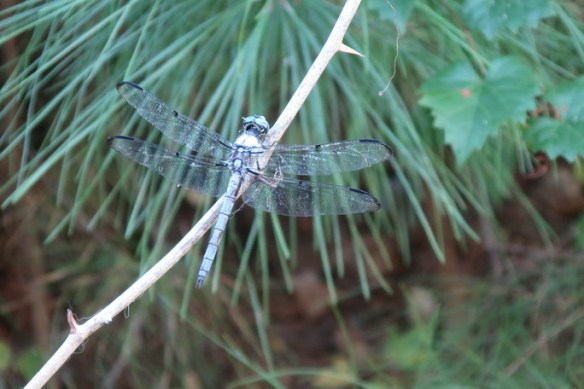Following up on my thoughts about how we can become better gardeners. As custodians of our precious parcels of earth, how can we best serve the environment as well as ourselves in a responsible, caring, kind manner and still express our creativity and personal style?
There is plenty out there that preaches about dire consequences if we don’t wholeheartedly embrace everything suggested by the extreme activists. It’s all or nothing for them. Personally, I find this aggressive approach unnecessary and somewhat bullying. It fosters guilt and resentment and frankly sucks the joy out of gardening.
On the other hand, the climate change deniers are at the other extreme and their attitude of not caring at all about the clear evidence on the climate crisis is maddening and can generate a feeling of ‘Why bother doing my part if others are not doing anything at all?’. This results in total inaction.
I believe there is a happy compromise. We can have our own unique gardens along with implementing good environmentally correct, eco-friendly, sustainable practices. But first, we gardeners must ask ourselves a few key questions.
The foremost thing is to ask ourselves why we garden at all. One gardens because one enjoys the outdoors, immersed in nature. Where, creating a beautiful, healthy garden to nurture both body and soul is vital. A space that soothes, inspires, informs and invigorates and also serves the greater good. Where artistic visions are expressed and simultaneously, the needs of flora and fauna supported. I garden because I must.
By its very nature, a garden is mans attempt at controlling the immediate environment. That area that we ‘own’ to do as we will. However, this cannot, must not, be at the cost of causing any negative impact. Do No Harm is not an oath restricted to physicians. It applies to every one of us. In the garden, it means we work in a manner that is useful, helpful, mindful and joyful. Creating any garden is hard work but by being thoughtful and caring, the labor is worthwhile, noble. A gardener worth her salt knows and embraces the fact that she does not own the garden at all. She is merely the custodian. This is a high honor and a great responsibility. The Earth is counting on us to do right. After all, a garden is not just about plants and their pretty flowers or tempting fruits. It’s about all the creatures who inhabit the garden and live in the ecosystem. This includes the gardener herself.
And that brings us to how we garden. If you believe that the gardener is a part of the garden itself, then surely the idea of best practice is implied. Nothing one implements can be harmful to the gardener and consequently, to any of the living beings in the garden. The solution then, is to go organic. It’s that simple.
As one who has always gardened organically, I know this method is not easy. Instead of spraying chemical pesticides and/or fertilizers and get instant results, organic applications take more diligence and vigilance. Organic products are to be used with prudence because even they, are broad in their action. If it is used to kill one kind of pest, say a tick, the product will affect a whole bunch of other bugs including the good ones. Organic or plant based does not automatically mean safe. Remember, tobacco is a plant product and grown organically or not it harms and can kill humans who smoke or consume it. In the context of the garden, think Round-Up and you’ll see what I mean. That powerful plant-derived chemical which acts swiftly and very effectively, is pure evil. There is plenty of data that proves my point. So, organic is our answer to the how.
Organic gardening comprises a number of aspects. It’s about the types of plants, the soil and how it is amended, water and how it is sourced and used, the tools we use, the wildlife and how everything is connected.
I will go into all those factors next week. For now, lets ponder over how we’re doing in the How department and what we can do better and what we can stop doing altogether.
Keep in mind, we’re trying to do our best but we’re only human. We make mistakes. So self-flagellation of any sort is not allowed. We’re growing better together.
In my garden right now –
















(c) 2023 Shobha Vanchiswar
[do_widget “Blog Subscriptions (Jetpack)”]


































































